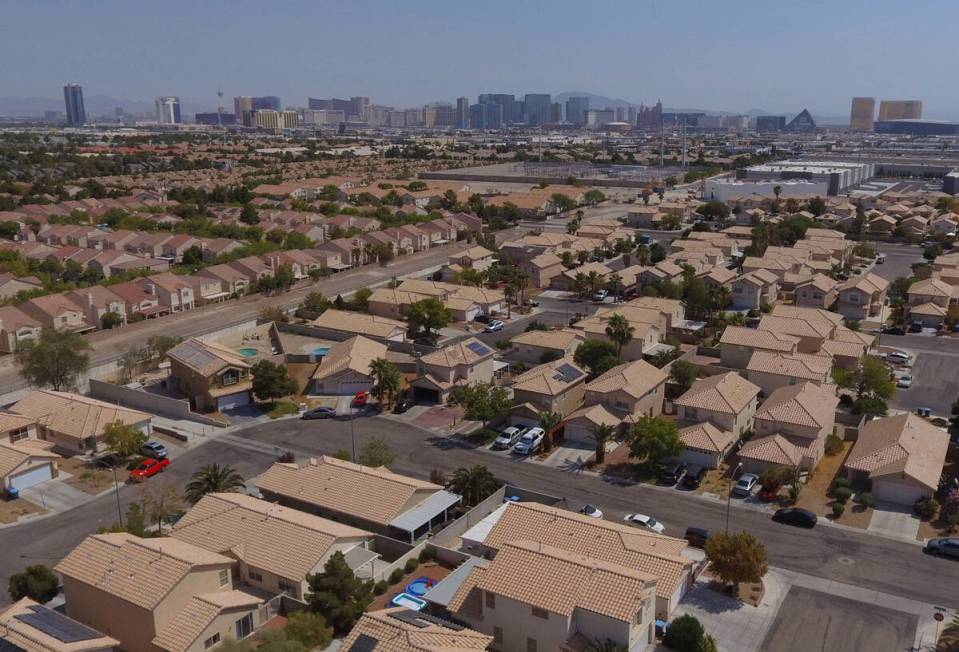How much you have to earn to qualify as middle class in Nevada, study says

The household income required to be considered middle class in the United States varies depending on where you live.
In California, the price is high.
As of 2022, middle-class household income ranged between $61,270 and $183,810 in the Golden State, according to a recent analysis from personal finance site GoBankingRates.
That’s roughly a 50% increase from 2012, when middle-class households earned an annual income of $40,933 to $122,800.
Oregon took the top spot in the U.S. with a 53.2% increase in annual income needed to be considered middle class between 2012 and 2022, followed by Washington with 52.1% and Colorado with 50.4%.
California ranked fourth.
Nevada came in at #44 on the list from GoBankingRates.
2022 middle-class income range in the Silver State: $47,764 to $143,292
2012 middle-class income range in Nevada: $36,055 to $108,166
10-year change in middle-class income (%): 32.47%
“Over the last decade, the household income needed to be part of the middle class has increased significantly,” GoBankingrates lead writer Gabrielle Olya wrote in a May 7 article titled “Here’s How Much the Definition of Middle Class Has Changed in Every State.”
“It also takes a lot more to reach the next level of wealth,” she added.
In 2012, an annual household income of $35,364 was enough to be considered middle class. Over the past decade, the minimum requirement has increased by $14,735.
How did GoBankingRates come up with data?
GoBankingRates used data from the U.S. Census Bureau to analyze each state’s household median income to find middle class income ranges.
Alaska had the lowest percentage increase in household income needed to be considered middle class at 23.5%.
Which states are in the top 10 for income increases?
Here are the top 10 U.S. states that saw the largest percentage increase in household income needed to be considered middle class, according to GoBankingRates:
Oregon
—2012 middle class income: $33,357 to $100,072
—2022 middle class income: $51,088 to $153,264
—10-year change: 53.2%
Washington
—2012 middle class income: $39,583 to $118,748
—2022 middle class income: $60,217 to $180,650
—10-year change: 52.1%
Colorado
—2012 middle class income: $38,829 to $116,488
—2022 middle class income: $58,399 to $175,196
—10-year change: 50.4%
California
—2012 middle class income: $40,933 to $122,800
—2022 middle class income: $61,270 to $183,810
—10-year change: 49.7%
Idaho
—2012 middle class income: $31,343 to $94,030
—2022 middle class income: $46,809 to $140,428
—10-year change: 49.3%
Utah
—2012 middle class income: $38,776 to $116,328
—2022 middle class income: $57,889 to $173,666
—10-year change: 49.3%
Montana
—2012 middle class income: $30,304 to $90,912
—2022 middle class income: $44,227 to $132,682
—10-year change: 46%
Tennessee
—2012 middle class income: $29,427 to $88,280
—2022 middle class income: $42,690 to $128,070
—10-year change: 45%
Rhode Island
—2012 middle class income: $37,401 to $112,204
—2022 middle class income: $54,247 to $162,740
—10-year change: 45%
Massachusetts
—2012 middle class income: $44,439 to $133,316
—2022 middle class income: $64,337 to $193,010
—10-year change: 45%
Which U.S. state is home to the highest middle class threshold?
Maryland residents had to make the most money in 2022 compared to any other U.S. state to qualify as middle class, with an annual household income of $65,641 to $196,922.
In 2012, its middle class made $16,975 to $51,254 less each year.
New Jersey’s middle class trailed closely behind, with an annual household income of $64,751 to $194,252.
Massachusetts, Hawaii, California, New Hampshire, Connecticut and Washington also had a middle class annual income threshold of at least $60,000.
The Las Vegas Review-Journal contributed to this report.